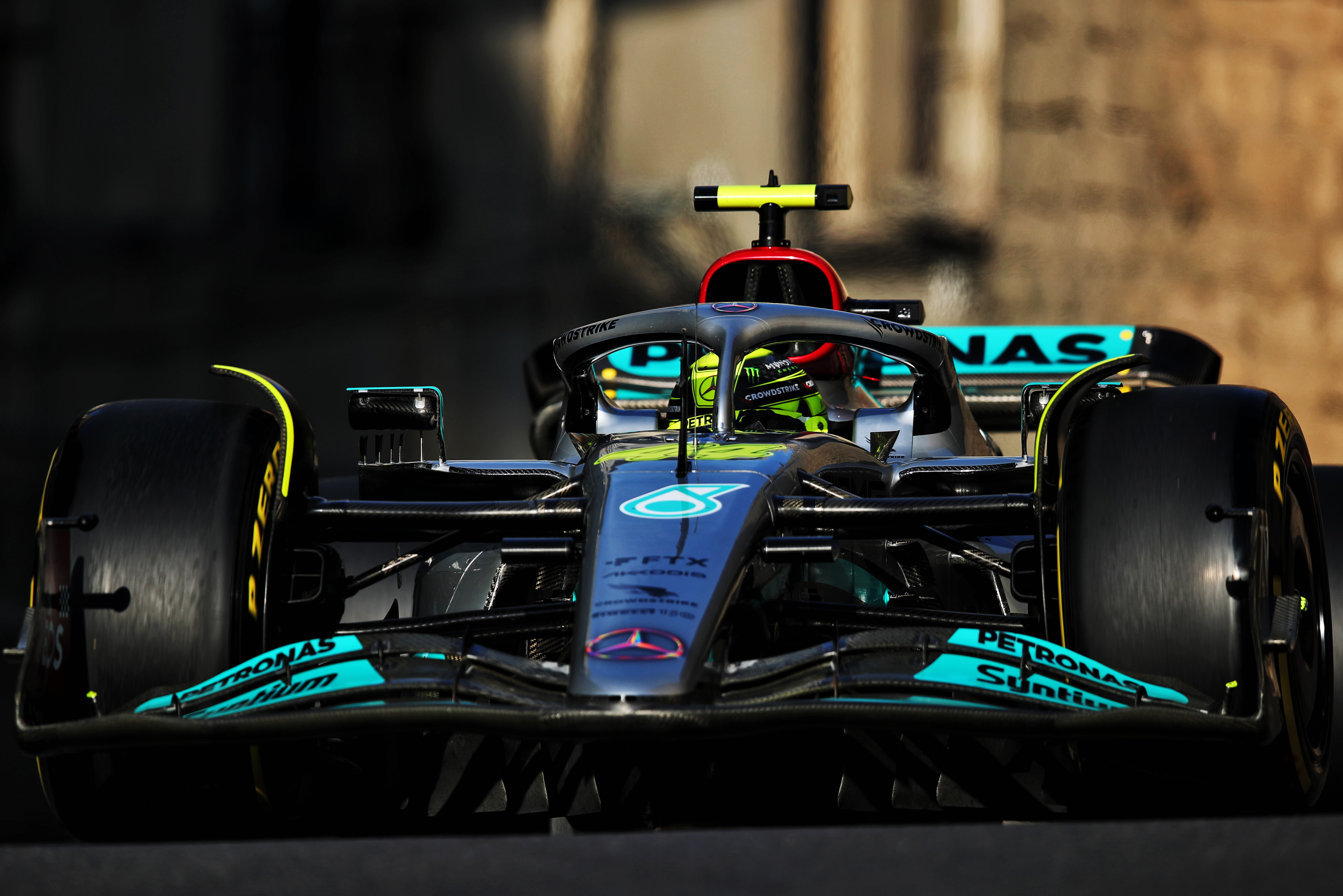Up Next

Mercedes admits its Formula 1 car needs “fundamental improvements” to be more competitive at the Azerbaijan Grand Prix as a comparison with the pacesetting Ferrari highlights its all-round losses.
George Russell and Lewis Hamilton ended Friday practice seventh and 12th in Baku, suffering from poor ride quality and low grip – a continuation of the issues that afflicted Mercedes in Monaco two weeks ago.
The bouncing on the straights, which again is different to the porpoising suffered in early races, also appears to be costing Mercedes serious speed and lap time.
“Overall, we’re not in a good position and it’s one where we need to be looking for some fundamental improvements rather than a case of fine tuning,” admitted trackside engineering director Andrew Shovlin.
Hamilton said the ride quality was the hardest thing about his day and claimed Mercedes “tried something experimental on my car and it didn’t feel that great”.
The seven-time world champion had started Friday edging Russell in FP1 but was more concerned by the total loss to pacesetter Charles Leclerc in FP2.

“I just can’t really tell you where there is 1.6 seconds or 1.3 seconds, whatever it is,” said Hamilton.
“That’s a long way away. I think a lot of it is in the straights.”
A look at the data and the onboard footage of the respective Hamilton/Leclerc laps confirms this but also underlines Mercedes’ other limitations at the moment.
It is the second half of the lap where the straightline speed loss is most evident.
The striking example is from the final corner to the finish line, where Hamilton loses around four tenths of a second – although he also loses three tenths of a second from the exit of the castle section to the tight Turn 16 left-hand at the end of the middle sector.
That explains almost half the deficit and the rest looks like it comes down to the missing grip that both drivers acknowledged.
Hamilton was already a couple of tenths down after the first corners alone and suffered bigger losses in Turn 4 (where he had to correct a small slide on exit), the Turn 5-6 sequence, and the final real corner where some mid-corner understeer kicked in.
Otherwise, the Ferrari just looks far more responsive. It turns in better and gets on the power better, supporting the view that the Mercedes is simply lacking grip.
There are some corners where the Mercedes appears equal to the Ferrari, mainly the slowest corners on the track – Turn 7, the castle section that follows it, and Turn 16.
That these came later in the lap could support Russell’s theory that “50%” of Mercedes’ problems were related to getting the tyres in the right window. If it has taken too long to bring the tyres up to the right temperature, it could potentially explain the apparent relative improvement in the second half of Hamilton’s lap.

The precise cause will determine how much progress can be made with the “fundamental” changes that Shovlin said the team needs.
If an increased ride height is necessary to improve the ride quality that hurt Mercedes on the straights then that is a worry because it will presumably increase drag and also reduce cornering performance as the car will be running higher.
Reducing the aggressive bouncing could buy back more time on the straights than it costs with increased drag.
However, it could compound the cornering issues further – especially as the lack of grip there, and the known ride quality issues after Monaco, suggest it is likely the W13 is already running at a higher ride height than desirable.
“It was a tricky day,” said Russell. “We weren’t as competitive as we would have liked. Again, tricky track to get the tyres in the right window.
“You see with a number of drivers, their laps are coming right at the end of a run whereas Ferrari and Red Bull seem to be able to turn it on.
“But they just have inherently a faster car than us and we’re doing everything we can to try and catch up.”






